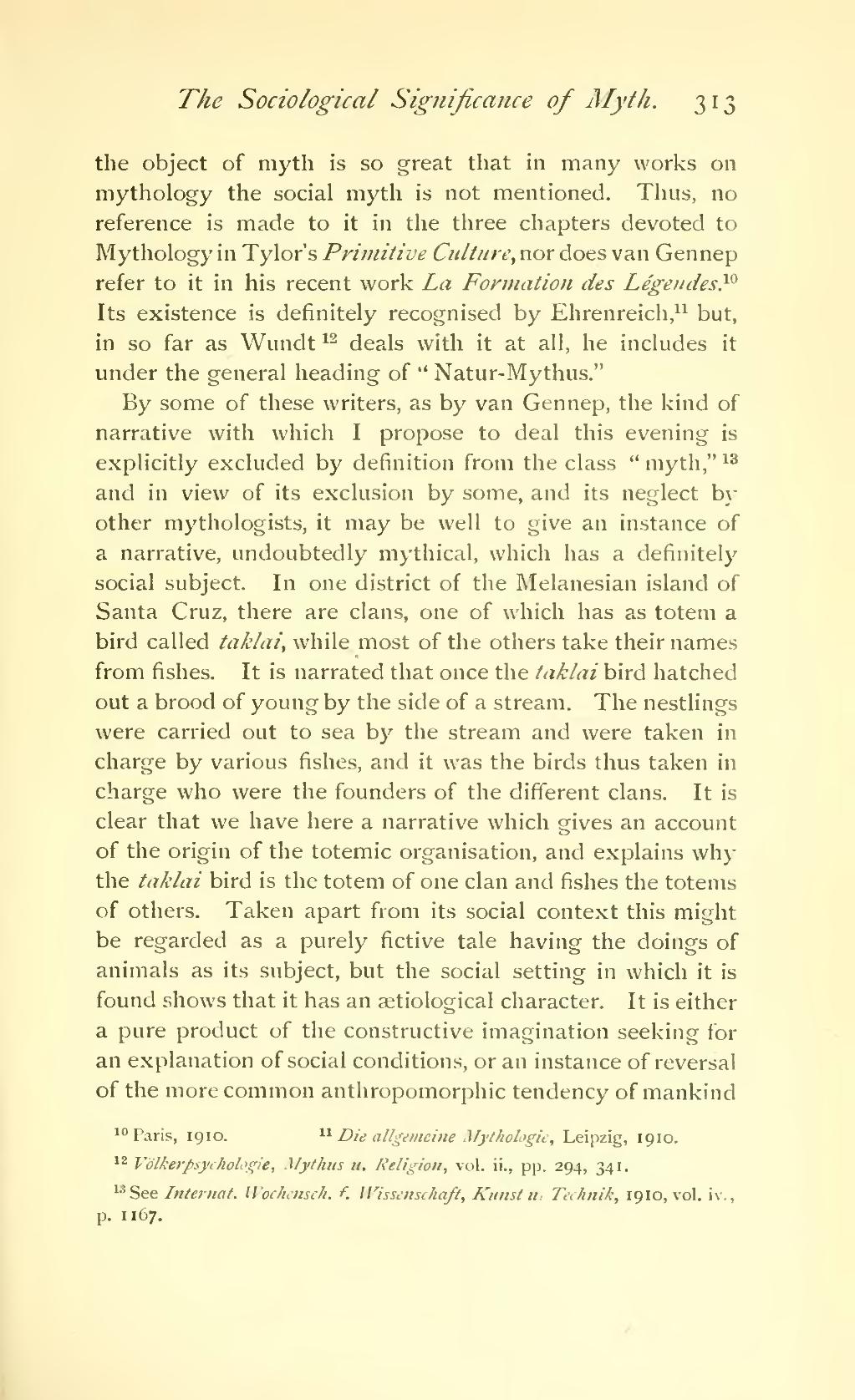the object of myth is so great that in many works on mythology the social myth is not mentioned. Thus, no reference is made to it in the three chapters devoted to Mythology in Tylor's Primitive Culture, nor does van Gennep refer to it in his recent work La Formation des Légeudes.[1] Its existence is definitely recognised by Ehrenreich,[2] but, in so far as Wundt[3] deals with it at all, he includes it under the general heading of "Natur-Mythus."
By some of these writers, as by van Gennep, the kind of narrative with which I propose to deal this evening is explicitly excluded by definition from the class "myth,"[4] and in view of its exclusion by some, and its neglect by other mythologists, it may be well to give an instance of a narrative, undoubtedly mythical, which has a definitely social subject. In one district of the Melanesian island of Santa Cruz, there are clans, one of which has as totem a bird called taklai, while most of the others take their names from fishes. It is narrated that once the taklai bird hatched out a brood of young by the side of a stream. The nestlings were carried out to sea by the stream and were taken in charge by various fishes, and it was the birds thus taken in charge who were the founders of the different clans. It is clear that we have here a narrative which gives an account of the origin of the totemic organisation, and explains why the taklai bird is the totem of one clan and fishes the totems of others. Taken apart from its social context this might be regarded as a purely fictive tale having the doings of animals as its subject, but the social setting in which it is found shows that it has an setiological character. It is either a pure product of the constructive imagination seeking for an explanation of social conditions, or an instance of reversal of the more common anthropomorphic tendency of mankind
